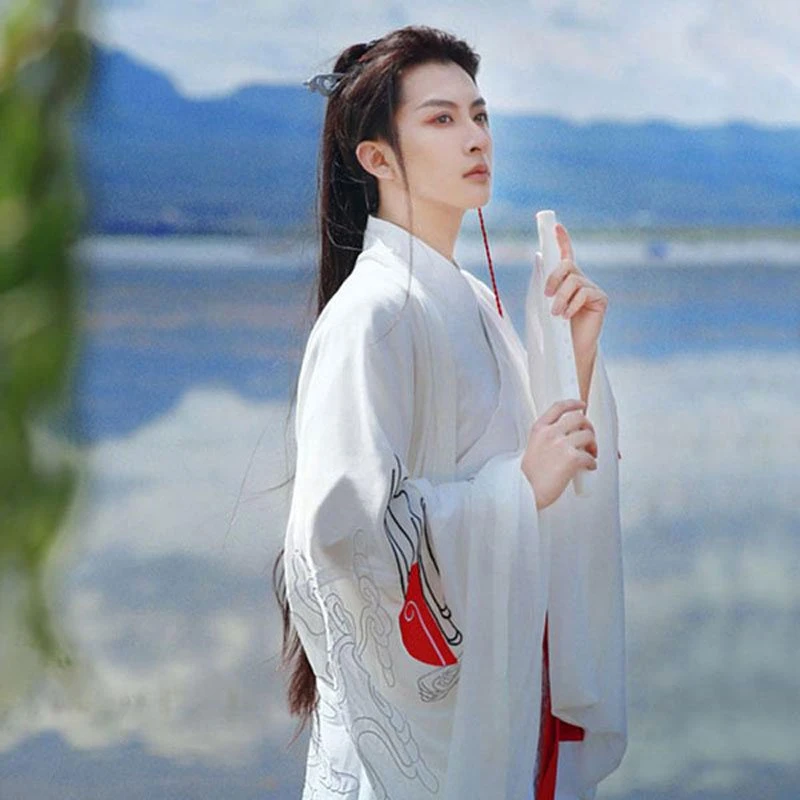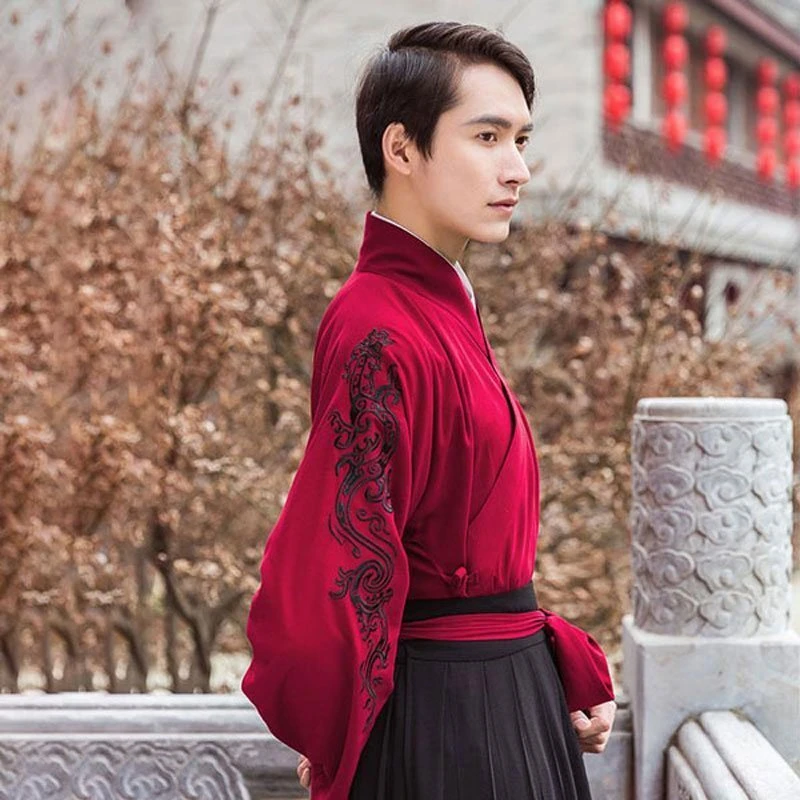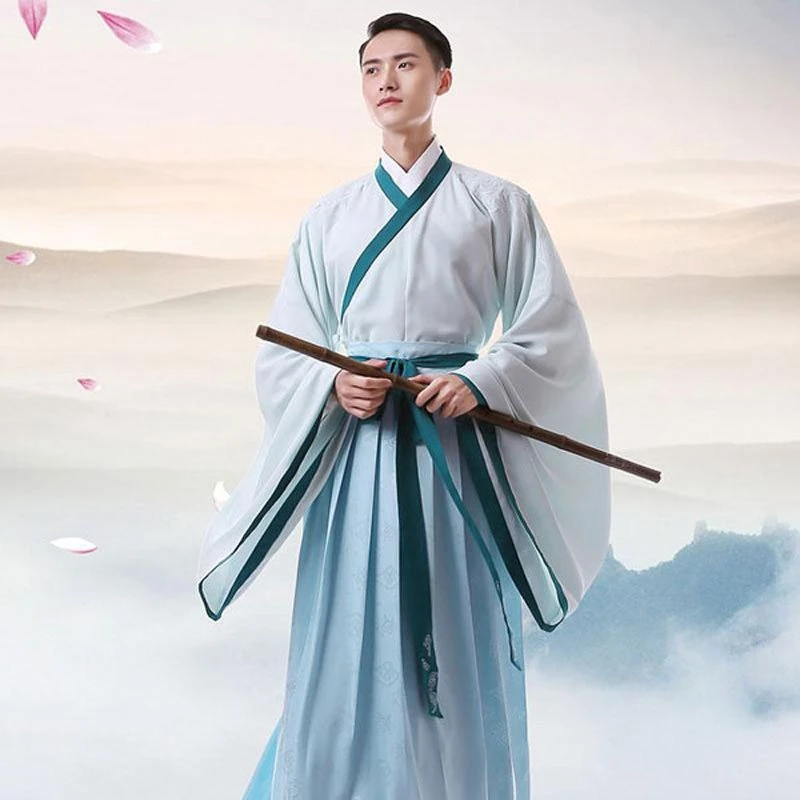The previous article's introduction focuses on women's Ruqun, and then we introduce men's Ruqun.
The men's Ruqun is a male dress, composed of a top blouse and a lower dress, and the upper jaw is mostly handed over(Jiaoling). Compared with the women's skirts, the men's skirt style and pattern are plainer.
"Zhou Yi(周易)" said that “Yellow Emperor, Yao, Shun is wearing clothes and the world is ruled”, which shows that in the Yellow Emperor's era, the tops of the blouses were the styles of the ancient Chinese people. This is the prototype of the Ruqun (a top blouse and a lower dress)of the next generation, costumes of the blouses, and other costumes.
Although its specific shape still needs further research, but the suit of a top blouse and a lower skirt lays the foundation of Hanfu.
Until the appearance of Zhiju, Quju, and so on, the number of people wearing Ruqun(Ru dress) has been reduced, but the official high-standard men's dress was still the Ruqun system(a top blouse and a lower dress), which continued until the Ming Dynasty.
The traditional dress of Hanfu is an enclosed skirt, which is made up of several pieces of skirts and is connected to the waist. There are ties on both sides of the skirt.
The number of skirts is not fixed, because the ancient cloth is narrow, the more piece of skirts you have, the larger the skirt will be.
There were only four-piece in a skirt in the Han Dynasty, and six in the Tang Dynasty. There were more than six-piece in skirts in the Song Dynasty and eight and ten in the late Ming Dynasty.
More about Ruqun:
About Ruqun, You Should Know These
4 Tips You Should Know about Ruqun




